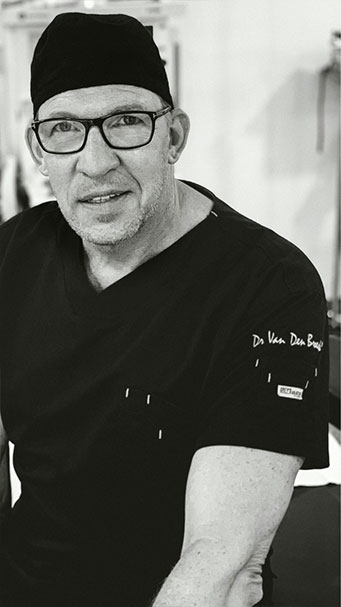Like the rest of the body, the oval of the face gradually sags over time. Fortunately, these days, cosmetic surgery and anti-ageing medicine offer many solutions for restoring the shape of our original face. Your Aesthetic Surgeon will suggest a facelift, the ultimate facial rejuvenation procedure!
Presentation
There are several types of facelift to improve the disfigurements caused by ageing of the face and neck, either locally or more extensively: the face lift, cervical lift, forehead lift, temporal lift and eyebrow lift. In this article, we will discuss the mini-facelift and the cervico-facial facelift. We’ll be coming back to the other types of facelift in another post shortly.
Mini-lifting and cervico-facial lifting both correct ageing in the neck and lower face. The difference between the two lies in whether or not corrective procedures are added to the eyelids, cheekbones, lips or any other part of the face that requires them. Unlike the first facelifts carried out in the 1960s/70s, which gave the face a “frozen” appearance, techniques have evolved towards gentler techniques. The aim is to keep the face looking natural, with a revitalising and refreshing effect. It is important that both the patient and those around him or her are able to “recognise” themselves after the operation.
These facelifts can be performed at any age, but generally from the age of fifty. Botulinum toxin injections can be added to the procedure.
Objectives
The aim of the procedure is to treat sagging and slackening of the skin and muscles of the face (cheeks, jowls, oval of the face) and neck. The aim is not to change the shape and appearance of the face but, on the contrary, to simply restore the various anatomical structures of the face and neck (skin, muscle, fat), enabling the patient to regain the appearance he or she had a few years previously.
Principle
Your aesthetic surgeon will re-tension the structures to correct any sagging. The skin is then “redraped” over the new contours, without excessive traction. This dual action makes it possible to obtain a natural result (because the skin is not pulled too much), a long-lasting result (because the muscular plan is solid) and generally fairly simple post-operative care (the skin is less “scarred” because it is less traumatised, due to the limited tension and detachment). If the patient has excess fat (often on the neck: “double chin”), this can be treated by liposuction.
On the other hand, if the face is ossified (when the face becomes hollow, this is known as ossification), this aspect can be corrected at the same time by reinjecting autologous fat (fat belonging to the patient) using the lipostructure technique.
In this way, the face and neck are “reconstructed” and “restructured”. The skin incisions are mostly hidden in the hair (at the nape of the neck, sometimes at the temples) and around the ear, so that the scar is almost entirely hidden.
The intervention
The operation is performed under general anaesthetic and therefore requires a pre-operative check-up, in accordance with the prescriptions. The anaesthetist will be consulted at least 48 hours before the operation. No medication containing aspirin should be taken in the 10 days prior to the operation. Hair must be washed the day before the operation and make-up removed carefully on the day of the operation. It is essential that you do not eat or drink anything for 6 hours before the operation.
The post-operative period
During the first few days, the patient should rest and avoid any violent exertion. Facelift surgery is not very painful. In most cases, simple painkillers are sufficient.
During the first few days, the person undergoing the operation should not be surprised or worried:
- oedema (swelling), which may be more pronounced on the second day than on the first,
- bruising in the neck and chin area,
- a sensation of painful tension, especially behind the ears and around the neck;
These ecchymoses and oedemas disappear on average within 2 weeks after the operation.
After the first month, the swelling has generally disappeared completely, but there is still a slight induration of the detached areas, which is more palpable than visible. The ears do not regain their normal sensitivity until one or two months later.
The final result
The final result will be visible two to three months after the operation. The scars will remain slightly pink and indurated for around 6 months. Thanks to the progress made and the meticulousness of our techniques, we can often achieve an appreciable rejuvenation effect, which remains very natural: the face does not look “surgical” and has more or less regained the features it had eight or twelve years ago, giving an overall rested, relaxed and refreshed appearance.
This physical improvement is generally accompanied by a psychological improvement. In the long term, the cervico-facial lift helps to combat the effects of time and has a lasting effect. However, as the years go by and the effect continues to be felt, it can be renewed ten or fifteen years later.
Making the right choice
If you are considering facelift surgery, it is important to choose a safe and competent establishment and plastic surgeon. Many clinics offer this type of operation at attractive prices, but these are often at the expense of fundamental factors such as the quality of the operation and post-operative complications: the competence of the surgeons and asepsis, which must be rigorous and strict. The services of a qualified plastic surgeon are absolutely essential if you are to achieve the desired results and avoid complications.
Never forget that your face is your first business card!








